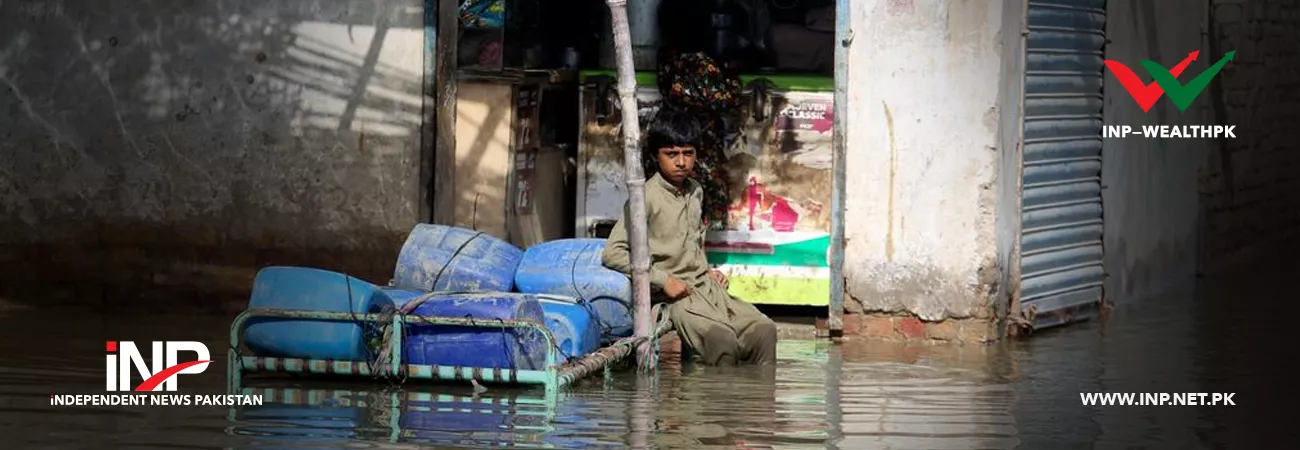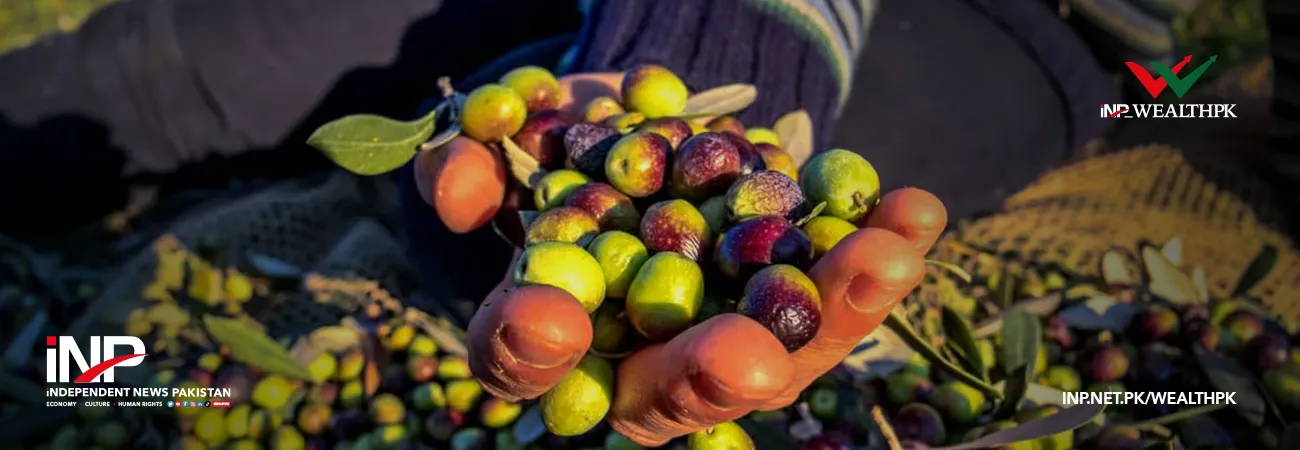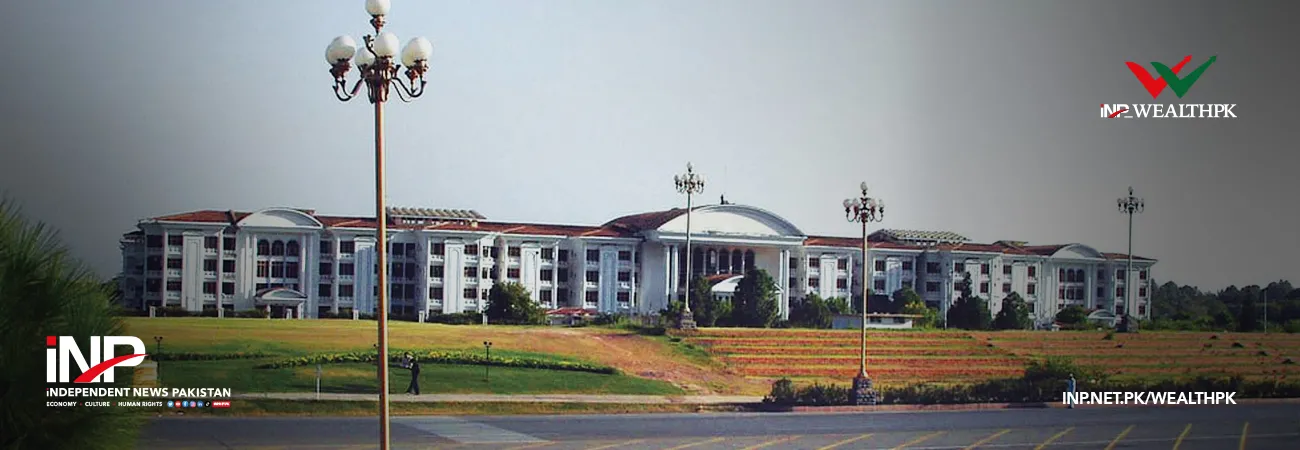INP-WealthPk
A post-flood assessment of the losses suffered by Pakistan put the total cost of rebuilding the destroyed infrastructure to more than USD 16.3 billion.
The assessment was carried out jointly by the Ministry of Planning, Asian Development Bank (ADB), the World Bank (WB), the European Union (EU) and the United Nations Development Program (UNDP). The assessment has called for urgent relief efforts by the international donors under the “Build Back Better” initiative to help the country raise the required sum for rehabilitation after the floods.
The Post-Disaster Needs Assessment (PDNA) has called for the immediate release of funds to help the poor, re-establish their homes and livelihoods, and increase the resilience of the country against climate threat. Total damages have exceeded USD 14.9 billion whereas total economic losses are upwards of USD 15.2 billion. According to the report, estimated needs for rehabilitation and reconstruction were at least USD 16.3 billion, without including the funds needed to increase climate resilience of the country.
Housing suffered losses to the tune of USD 5.6 billion, livestock USD 3.7 billion, and communications USD 3.3 billion, according to the report. Sindh province has suffered 70% of the total losses followed by Balochistan, Khyber Pakhtunkhwa, and then Punjab. The report has not only outlined a comprehensive program for rebuilding in the wake of floods but also recommended steps for broader macro-economic stability to ensure consistency and human security in the future.
Poor people were the worst hit by the floods with 1730 total lives lost and a total of 33 million people affected directly or indirectly. Eight million people stand displaced while post-flood stagnation of water is causing water-borne and vector-borne diseases. This makes it an evolving situation and thus makes it necessary for intervention on part of relief and developmental organizations. Post-flood shortage of food and rising prices make it necessary that direct cash transfers are made to the affected people so that they can sustain themselves before the rehabilitation work gets underway. Women are also the worst affected, especially those involved in agriculture and livestock.
Human Impact Assessment of the PDNA has forecasted poverty to increase from 3.7% to 4%, pushing a total of 8.4 to 9.1 million below the poverty line. In the same vein, multi-dimensional poverty is set to increase to almost 6%, implying that more than 1.9 million households are set to move below the non-monetary poverty line. Output levels in agriculture and livestock are also set to fall after the floods, further eroding incomes and increasing the vulnerability of millions.
The country’s GDP is set to decrease by 2.2 percentage points because of the floods in fiscal year 2022. The agriculture sector is set to contract almost 1%, which will have spill-over effects in other sectors of the economy especially in industry. Cotton crop will take a severe hit and apparel industry may feel the heat of a shortage in supply.
Relief efforts of the government are underway, but because of a liquidity crunch, the government is unable to fully meet the immediate needs of the people. Significant international support is be needed to complement Pakistan’s own commitment to increase domestic revenue mobilization, save scarce public resources, and reduce the risk of exacerbating macroeconomic imbalances. Output stabilization, restoration of livelihoods and rebuilding of infrastructure will start immediately as the government moves in with a concerted plan to rectify the losses.
Costs of the damaged infrastructure, and destroyed livelihoods may well increase beyond the stipulated amount since more accurate information and assessment will keep coming in. However, the PDNA has successfully laid the framework for a post-reconstruction effort. This presents an opportunity for the government and the international financial institutions to strengthen institutions, evolve a more long-term stabilization policy and a comprehensive plan to correct fiscal imbalances after investing in areas where dividends are huge.
The PDNA has outlined a comprehensive plan for the rebuilding of the country not only in the affected areas but also in areas vulnerable to future disaster threats. Adaptation, climate resilience, macro-economic stability, fiscal corrections, revenue growth, efficient public spending and targeted interventions to increase the economic heft of marginalized communities, all lay at the foundations of the report. Development on a more shared and broad level should be carried out since the mobilization of resources after the floods offer an opportunity to be utilized to correct the priorities of the government and development institutions.
“In the short term, targeted mechanisms are needed, such as social assistance and emergency cash transfers, emergency health services, and programs to restore shelter and restart local economic activities, particularly in agriculture. Reconstruction and rehabilitation should rest on key principles of participatory, transparent, inclusive, and green recovery for long-term resilience— “building back better”; pro-poor, pro-vulnerable, and gender sensitive, targeting the most affected; strong coordination of government tiers and implementation by the lowest appropriate level; synergies between humanitarian effort and recovery; and a sustainable financing plan,” the report read.
“Given Pakistan’s limited revenues, significant international support and private investment is needed for a comprehensive and resilient recovery. Pakistani authorities are committed to accelerating reforms to generate additional domestic fiscal resources and make public spending more efficient and targeted. Beyond the immediate needs of floods reconstruction, these reforms, while protecting the most vulnerable, will be important for generating fiscal space to invest more broadly into more climate-resilient infrastructure and adaptation to climate change, as well as to build buffers to face future shocks, while addressing macroeconomic imbalances.
This commitment of the Government will also be key to mobilizing further international support and unlocking private sector sources of financing—both of which will be absolutely critical to facing the current climate change-induced shock,” the report said.
“The ADB, the EU, the UNDP and the World Bank are fully committed to working with the Government and people of Pakistan during the recovery phase, and to increasing the country’s climate resilience,” the report declared.
Credit : Independent News Pakistan-WealthPk













